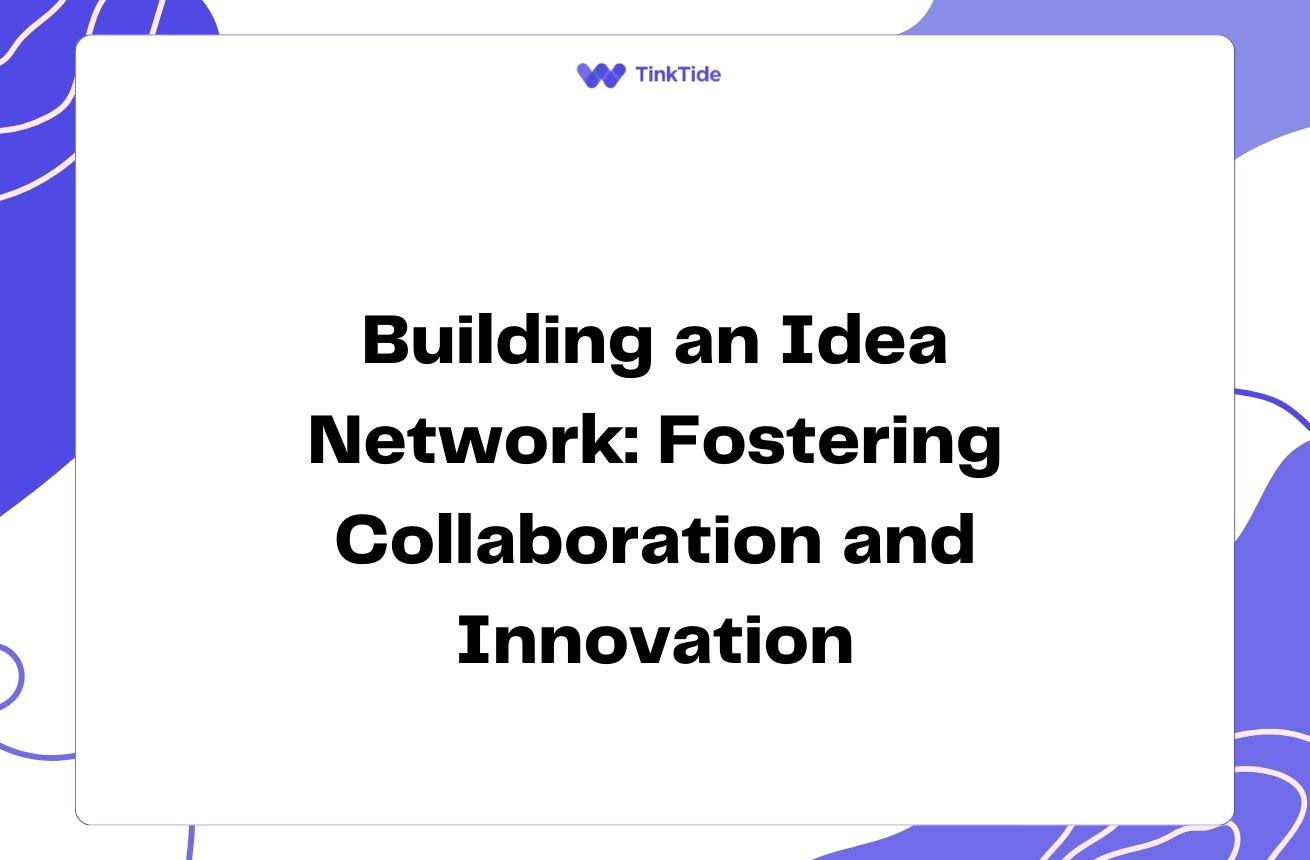Boost Creativity: Visual Storytelling in Brainstorming
The Power of Visual Storytelling in Brainstorming
Visual storytelling is a powerful tool that can transform your brainstorming sessions from ordinary to extraordinary. By combining the art of storytelling with visual elements, you can unlock new levels of creativity and generate more compelling ideas.
When you integrate visual storytelling into your brainstorming process, you tap into both the logical and creative sides of your brain. This holistic approach allows for a more comprehensive exploration of ideas, leading to innovative solutions and unique concepts.
Research has shown that our brains process visual information 60,000 times faster than text. By leveraging this innate ability, visual storytelling can help you and your team quickly grasp complex concepts and make connections that might otherwise be missed in traditional brainstorming sessions.
Let's explore how you can harness the power of visual storytelling to supercharge your brainstorming sessions and generate truly compelling ideas.
Key Elements of Visual Storytelling in Brainstorming
To effectively integrate visual storytelling into your brainstorming process, it's important to understand its key elements:
- Imagery: Use pictures, sketches, or diagrams to represent ideas
- Narrative structure: Create a story arc to connect different concepts
- Emotional engagement: Evoke feelings to make ideas more memorable
- Simplicity: Keep visuals clear and easy to understand
- Interactivity: Encourage participation and collaboration
Benefits of Using Visual Storytelling in Brainstorming
Incorporating visual storytelling into your brainstorming sessions offers numerous advantages. It can help you improve learning and retention, making your ideas more memorable and impactful.
Visual storytelling also enhances engagement among team members. When people can see and interact with ideas visually, they're more likely to contribute and build upon those concepts, leading to richer, more diverse brainstorming outcomes.
Moreover, visual storytelling can break down communication barriers. Complex ideas become more accessible when presented visually, allowing team members from different backgrounds or expertise levels to contribute equally.
By using visual storytelling, you can create a shared visual language within your team, fostering better collaboration and understanding throughout the brainstorming process.
Techniques for Integrating Visual Storytelling in Brainstorming
There are several effective techniques you can use to incorporate visual storytelling into your brainstorming sessions:
1. Mind Mapping: Create visual diagrams that connect ideas and concepts. This technique helps visualize relationships between different thoughts and can spark new connections. Tools like MindMeister can be useful for digital mind mapping.
2. Storyboarding: Use a series of images or sketches to illustrate a process or concept. This technique is particularly useful for developing step-by-step solutions or exploring different scenarios.
3. Visual Metaphors: Represent abstract ideas with concrete images. This can help make complex concepts more relatable and memorable. For example, you might represent team collaboration as a jigsaw puzzle.
4. Empathy Mapping: Create visual representations of your target audience's thoughts, feelings, and behaviors. This technique can help you generate ideas that truly resonate with your audience's needs and desires.
Tools for Visual Storytelling in Brainstorming
To effectively use visual storytelling in your brainstorming sessions, consider using these tools:
- Miro: A digital whiteboard platform for collaborative visual brainstorming
- Canva: A graphic design tool for creating visual elements and infographics
- Storyboard That: An online tool for creating storyboards and comics
- Lucidchart: A diagramming tool for creating flowcharts and mind maps
- Physical whiteboards and sticky notes: Sometimes, analog tools can be the most effective for hands-on visual brainstorming
Steps to Implement Visual Storytelling in Your Brainstorming Process
Follow these steps to effectively integrate visual storytelling into your brainstorming sessions:
- Step 1: Define your brainstorming goal and choose an appropriate visual storytelling technique
- Step 2: Prepare necessary materials or digital tools before the session
- Step 3: Begin the session with a brief explanation of the visual storytelling technique you'll be using
- Step 4: Encourage all participants to contribute visually, not just verbally
- Step 5: Use prompts or questions to guide the visual storytelling process
- Step 6: Allow time for discussion and elaboration on the visual stories created
- Step 7: Synthesize the visual stories into concrete ideas or action plans
Overcoming Challenges in Visual Storytelling Brainstorming
While visual storytelling can greatly enhance brainstorming, you might encounter some challenges. Some team members may feel uncomfortable with drawing or visual expression. Address this by emphasizing that artistic skill isn't necessary – simple sketches or diagrams are often the most effective.
Another potential challenge is keeping the visuals focused and relevant. Encourage participants to stay on topic and relate their visual stories back to the main brainstorming goal. You can use a SWOT analysis framework to help structure the visual storytelling process.
Lastly, be mindful of time management. Visual storytelling can be engaging, but it's important to allocate time wisely between creation, discussion, and idea synthesis. Consider using a timer to keep the session on track.
By anticipating and addressing these challenges, you can ensure that visual storytelling enhances rather than hinders your brainstorming process.
Address common questions
Here are some frequently asked questions about integrating visual storytelling into brainstorming:
What if I'm not good at drawing?
Don't worry about artistic skill. Simple stick figures, basic shapes, and even written words can be effective in visual storytelling. The goal is to communicate ideas visually, not create a masterpiece.
How can visual storytelling help with remote brainstorming?
Visual storytelling can be particularly effective in remote settings. Use digital whiteboard tools like Miro or Jamboard to create a shared visual space. This can help overcome the challenges of virtual communication and create a more engaging remote brainstorming experience.
How long should a visual storytelling brainstorming session last?
The ideal length can vary, but aim for 60-90 minutes. This gives enough time for explanation, creation, discussion, and synthesis without fatigue setting in. For longer sessions, consider breaking them up with short breaks.
Can visual storytelling work for all types of brainstorming topics?
Yes, visual storytelling can be adapted to most topics. For abstract concepts, use metaphors or symbols. For data-heavy topics, consider infographics or charts. The key is to find a visual representation that makes the information more accessible and engaging.
How do I capture and preserve the ideas generated through visual storytelling?
Use a combination of methods. Take photos of physical visuals, save digital files, and have a note-taker summarize key points. Consider using a tool like Evernote to organize and tag your visual brainstorming outputs for easy reference later.
Provide additional resources
The Power of Visual Storytelling
A comprehensive guide to using visual content in storytelling and marketing
IDEO's Design Thinking Course
Learn about design thinking, which incorporates visual storytelling in problem-solving
Storytelling with Data
Blog and resources for effective data visualization and storytelling
Gamestorming
A playbook of games and activities for innovators, rule-breakers, and changemakers
Visual Thinking: Empowering People & Organizations through Visual Collaboration
A practical guide to visual thinking in business contexts
Summarize key takeaways
Integrating visual storytelling into your brainstorming sessions can significantly enhance creativity, engagement, and idea generation. By leveraging the power of visuals, you can tap into both logical and creative thinking, leading to more innovative and compelling ideas.
Remember, the key to successful visual storytelling in brainstorming is to keep it simple, encourage participation, and focus on communicating ideas effectively. Don't let concerns about artistic ability hold you back – even basic visuals can be powerful tools for ideation.
Start incorporating visual storytelling techniques in your next brainstorming session. Experiment with different methods and tools to find what works best for your team. With practice, you'll unlock new levels of creativity and generate ideas that truly stand out.
Elevate Your Brainstorming with Visual Storytelling
Ready to transform your brainstorming sessions? Try our visual collaboration tools for free.
Start Your Free Trial

